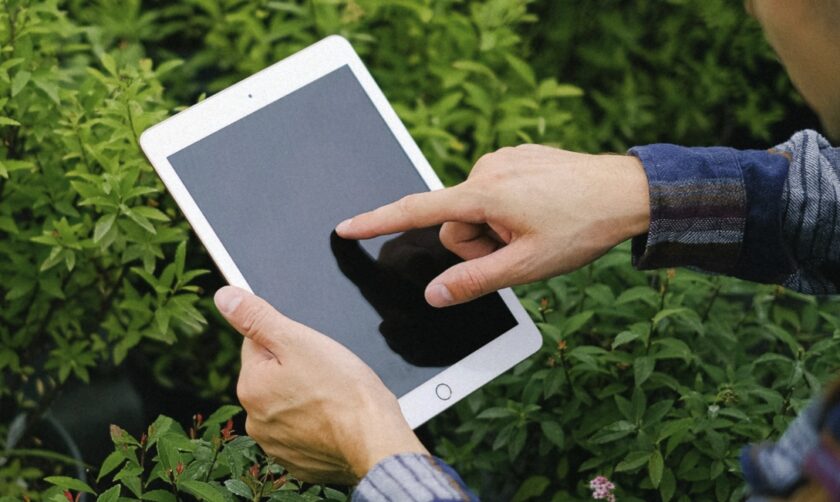Key Ways IoT is Revolutionizing Agriculture

The Internet of Things (IoT) is transforming traditional farming into a high-tech, data-driven industry that helps farmers produce more food while using fewer resources.
By connecting various sensors, devices, and machines to the internet, farmers can now monitor their crops and livestock around the clock, make better decisions, and automate many routine tasks.
These smart farming solutions are becoming increasingly affordable, making them accessible to farms of all sizes. IoT devices can track soil moisture, weather conditions, crop health, and animal behavior, sending real-time data to farmers’ smartphones or computers.
This instant access to information helps farmers know exactly when to water crops, apply fertilizers, or address potential problems before they become serious.
For example, sensors can alert farmers about pest infestations early on, allowing them to take action before significant crop damage occurs.
What makes these solutions particularly attractive is their ability to reduce waste, lower labor costs, and increase crop yields while being cost-effective in the long run.
As technology becomes more affordable and user-friendly, even small-scale farmers can adopt these smart farming practices to improve their productivity and profitability.
Key Ways IoT is Revolutionizing Agriculture with Cost-effective mart Farming Solutions
Precision Irrigation and Water Management
Precision irrigation represents one of the most significant advances in agricultural IoT technology.
Modern systems use networks of soil moisture sensors strategically placed throughout fields to provide real-time data about water needs.
These sensors communicate with automated irrigation systems that can activate and deactivate based on actual soil conditions, rather than following rigid schedules.
The systems integrate weather forecast data, automatically canceling scheduled irrigation if rain is expected.
Farmers can monitor and control their irrigation systems remotely through smartphone apps, receiving instant alerts about potential issues like leaks or system malfunctions.
This precision approach typically reduces water usage by 30-50% while maintaining or improving crop yields.
Automated Climate Control and Monitoring
Climate control systems in modern agriculture have evolved far beyond simple thermostats.
Today’s IoT-enabled systems continuously monitor multiple environmental factors including temperature, humidity, CO2 levels, and light intensity.
Smart controllers automatically adjust greenhouse conditions to maintain optimal growing environments around the clock. When conditions deviate from preset parameters, the system alerts farmers immediately through mobile notifications.
This custom iot development significantly reduces energy costs while ensuring more consistent growing conditions. The system also collects and analyzes environmental data over time, helping farmers optimize their growing conditions based on historical performance.
Smart Livestock Monitoring and Management
The integration of IoT technology in livestock management has transformed traditional animal husbandry.
Wearable devices attached to animals track vital signs, location, and behavior patterns in real-time.
These smart tags can detect early signs of illness by monitoring body temperature, activity levels, and feeding patterns.
GPS tracking capabilities help manage grazing patterns and create virtual fences, automatically alerting farmers if animals stray beyond designated areas. For dairy operations, smart milking systems track individual cow production, milk quality, and health metrics. This comprehensive monitoring helps farmers identify health issues early, optimize feeding programs, and improve breeding timing.
Crop Health Monitoring and Disease Prevention
Modern crop monitoring systems combine drone technology with sophisticated sensors to provide early warning of potential problems.
Drones equipped with multispectral cameras can detect signs of disease or pest infestation before they become visible to the human eye. Ground-based sensors monitor soil conditions, nutrient levels, and pest activity.
The system analyzes this data to identify potential issues and recommend targeted interventions.
This early detection capability allows farmers to address problems precisely when and where needed, reducing the use of pesticides and fertilizers while protecting crop yields.
The technology also creates detailed maps of crop health across fields, enabling more precise and efficient treatment of problem areas.
Weather Monitoring and Prediction Systems
Field-specific weather stations have revolutionized agricultural decision-making.
These IoT-enabled stations provide highly localized weather data, helping farmers make more informed decisions about planting, harvesting, and crop protection.
The systems monitor multiple parameters including temperature, rainfall, wind speed, and humidity.
Advanced analytics combine this local data with regional weather patterns to predict frost risk, severe weather, and optimal conditions for various farming activities.
Mobile alerts warn farmers of approaching weather threats, allowing them to take protective action. This precise weather information helps optimize the timing of field operations and reduce weather-related crop losses.
Automated Equipment and Farm Vehicles
The integration of IoT technology in farm equipment has dramatically improved operational efficiency.
Modern tractors and harvesters use GPS guidance systems to follow precise paths, reducing overlap and ensuring complete coverage of fields.
Equipment sensors monitor machine health and performance, predicting maintenance needs before breakdowns occur.
These smart machines can automatically adjust their settings based on field conditions or crop requirements, ensuring optimal performance while reducing fuel consumption and wear.
The technology also enables detailed record-keeping of all field operations, helping farmers track costs and optimize their equipment use.
Conclusion
The implementation of these IoT solutions is becoming increasingly accessible through modular systems that allow farmers to start small and expand gradually.
Many solutions are now available through subscription-based services that spread costs over time instead of requiring large upfront investments.
Cloud-based platforms reduce the need for expensive on-site computing infrastructure, while mobile apps make complex data easy to understand and act upon.
The benefits of implementing these technologies include significant reductions in resource usage, lower labor costs, improved crop yields, and better decision-making based on real-time data. While the initial investment may seem substantial, most farmers find that the cost savings and productivity improvements provide a strong return on investment within two to three growing seasons. As these technologies continue to evolve and become more affordable, they are increasingly accessible to farms of all sizes, helping create a more sustainable and efficient agricultural sector.
Spotted something? Got a story? Email: [email protected]
Latest News
